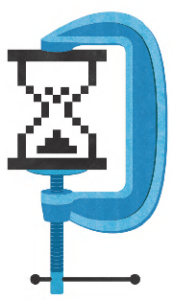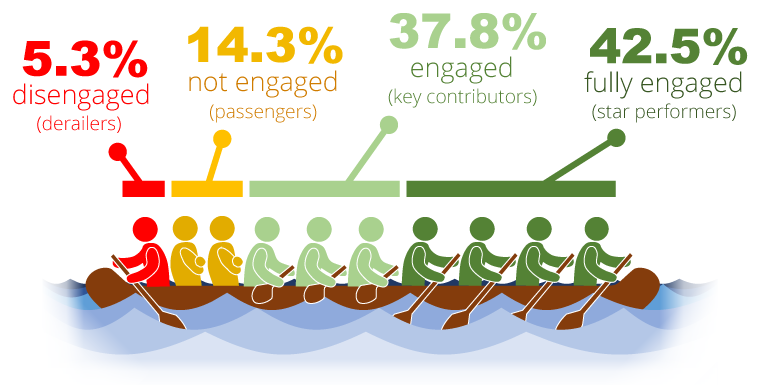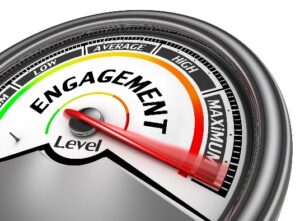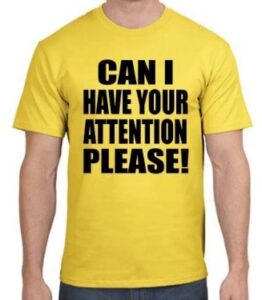
March 27, 2024
In the digital world,
the scarce commodity is attention

How good is your company at harnessing and focusing your employees’ attention?
Attention is one of the scarcest and most valuable resources in the 24/7 connected digital world. Individual employees have unlimited access to a wealth of information both personal and business related anytime, anywhere, on any device. The challenge is that these individuals only have limited time and a limited attention span to consume, process, and focus this wealth of information in service to the successful performance of your company.
Psychologist and economist, Hebert Simon describes attention as a “bottleneck” in human thought. He also said that “a wealth of information creates a poverty of attention.”
Recent studies have documented that the average employee switches tasks every three minutes and has a maximum focus stretch of 12 minutes. Much of this constant attention shifting behavior is due to employees trying to do multiple things at the same time. Julie Morgenstern, a productivity consultant, has shown that “stripping multi-tasking from your work routine would help you gain back 30%-40% of your actual time and mental clarity (attention) per day.”
There are multiple challenges to capturing and holding your employees’ attention at work.
What distracts an employee’s attention?
Multiple studies have identified a series of major sources that distract an individual’s attention in the workplace or the marketplace including:
- An office worker, on average, will check their email inbox 30 times every hour
- The average user picks up their mobile phone 1,500 times a week, consuming over 3 hours per day
Studies have also shown that people who use a mobile device during a meeting are so distracted that it’s almost as if they aren’t present at all. As such, many companies have instituted a “mobile device ban” for all meetings.
Emails, text messages, and intra-office collaboration tools are constant sources of attention distraction throughout everyone’s day. Without controlling these interruptions, it’s virtually impossible to bring your full and deliberate attention to accomplishing critical tasks in a timely manner.
Different types of attention
There are multiple types of attention that individuals use during the course of their daily activities. Depending on their need and circumstances, they may deploy one of the four types below:
- Sustained attention is the ability to focus on one specific task for a continuous amount of time without being distracted.
- Selective attention is the ability to select from many factors or stimuli and to focus only on the one that you want while filtering out other distractions.
- Alternating attention is the ability to switch your focus back and forth between tasks that require different cognitive demands.
- Divided attention is the ability to process two or more responses, which is often referred to as multi-tasking.
The study results and statistics cited earlier would suggest that the quality and value of attention as a resource declines in descending order from top to bottom of the types above.
Lack of employee attention equals lack of employee engagement

There are numerous studies that track and document how engaged employees are across multiple industries. Here are a few that got my attention and reinforced the correlation between attention and engagement:
- 57% of American workers are not fully engaged in their work (see Gallup chart above)
- Disengaged employees cost U.S. companies between $450-$500 billion a year in lost revenues (HR Drive)
Additional research studies have shown that companies with a high level of fully engaged employees:
- Have a 19.2% increase in operating income and a 218% higher income per employee
- Deliver 147% higher earnings per share and 21% higher profitability than their competitors
- Outperform the S&P 500 by 112%
The power of full engagement

Former colleague and good friend, Jim Loehr, sports psychologist, author, and co-founder of the Human Performance Institute created and evangelized the power of full engagement. The tenets were based on his initial work and research with elite athletes, and then “corporate athletes”, to help them achieve their maximum performance in high stress situations.
Here is his perspective on how attention impacts performance:
“We live in a digital time. Our rhythms are rushed, rapid fire and relentless, our days carved up into bits and bytes. We celebrate breadth rather than depth, quick reaction more than considered reflection. We skim across the surface, alighting for brief moments at dozens of destinations but rarely remaining for long at any one.”
“To be fully engaged, we need to be fully present. To be fully present we must be physically energized, emotionally connected and mentally focused.”
During multiple conversations and time spent with Jim, I learned first-hand how critical undivided attention is to achieve high-performance results. In my work with CEOs and C-Suite executives, along with middle managers and frontline workers, the difference between success and failure is their ability to focus their attention on what is important and not be distracted by what is urgent.
To successfully compete as a digital enterprise requires full commitment and engagement from your employees. Harnessing and focusing individual attention in the workplace is turning out to be a differentiating source of competitive advantage.
|





